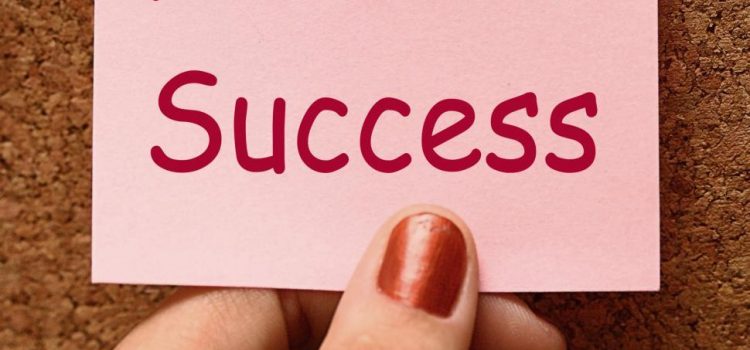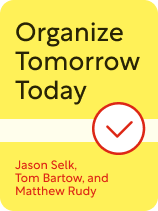

This article is an excerpt from the Shortform book guide to "Organize Tomorrow Today" by Jason Selk, Tom Bartow, and Matthew Rudy. Shortform has the world's best summaries and analyses of books you should be reading.
Like this article? Sign up for a free trial here.
How do you set your day up for success? What are some things you can do to get yourself going in the morning?
When you start your day right, it’ll likely continue and end that way. That’s why it’s important to set yourself up for success from the get-go by preparing both your mind and body for the day ahead.
Here is how to set yourself up for success so you can seize the day with enthusiasm and confidence.
Prepare Your Mind for Success
In their book Organize Tomorrow Today, Selk, Bartow, and Rudy explain how to set yourself up for success in the morning with a simple 3-step routine. It only takes about two minutes to complete, and it helps to foster a sense of peace and positivity as you move forward in your day.
1. Take a Calming Breath
Start the mental preparation exercise with a calming breath. Inhale and exhale deeply, pausing for a couple of seconds between breathing in and breathing out. According to the authors, this improves your mental state because focused breathing reduces the effects of your body’s stress response. Since its stress response hinders your ability to think clearly, a calming breath will help clear your mind.
(Shortform note: If you’re feeling stressed or anxious, sometimes a single deep breath isn’t enough to calm down. For extra support, try alternate nostril breathing, a type of breathwork that’s commonly part of meditation or yoga practices. Gently close one nostril by placing your fingers over it, then exhale and inhale once through the open nostril. Once you’ve completed one cycle of breath, release your fingers and cover the other nostril. Exhale and inhale once, this time through the opposite nostril. Keep alternating nostrils through as many cycles of breaths as you need.)
2. Repeat Positive Affirmations
According to the authors, the next step is to repeat affirmations that define qualities you want to embody. Create your affirmations by focusing on the things you desire. Start with the phrase, “I am…,” then name the positive qualities you want to embody. For example, you could say, “I am kind to the people around me. I am a hard worker and full of creative ideas. I am present for my friends and family.” By repeating the statements frequently, you help turn them into reality.
(Shortform note: Some psychologists also recommend using positive affirmations, arguing that they can orient your unconscious beliefs and attitudes toward improving your life. Here are a couple of strategies you can use to get the most benefit out of them. First, as Selk, Bartow, and Rudy recommend, construct affirmations in the present tense. Your subconscious mind more easily connects with the present than the future or past. Second, avoid using negative descriptions in your statements. For example, rather than saying, “I’m not an irresponsible person,” say, “I’m a responsible person.” If you use the former statement, your subconscious may latch onto the idea of being irresponsible and miss that you’re invoking the opposite idea.)
3. Visualize the Previous Day’s Successes and Tomorrow’s Tasks
During this step of mental preparation, the authors suggest you start by picturing three moments of success from the day before. This will remind you of your ability to succeed and reinforce your positive mindset. Then, picture three things you want to get done in the next 24 hours. Picture yourself performing the tasks successfully, and imagine how you want to feel. The more detailed your visualization is, the more helpful it’ll be.
(Shortform note: According to Hal Elrod in The Miracle Morning, you can use a vision board as an extra visualization aid. To create one, find images that represent what you want to become, what you want to have, and what you want to do. These could be photos, magazine clippings, internet printouts, or quotes. Arrange the images on a poster board to represent your purpose and ideal future. You could adapt this recommendation to fit within Organize Tomorrow Today’s mental preparation exercise by also adding your past successes and the things you want to accomplish to your vision board.)
Visualization prepares your mind and body for an action before you really take it. It allows you to rehearse what you want to happen, meaning by the time you have to do the thing you visualized, you feel more prepared for potential challenges and surprises.
(Shortform note: Visualization prepares you for an activity because it activates the same parts of your brain that actually doing the activity would. For example, thinking about your body moving in some way, like raising your hand or taking a step forward, activates your motor cortex, the part of your brain that directs such movements. Imagining a movement primes your body to do it with greater control and coordination. Research also shows that visualization improves motivation, raises confidence, and reduces anxiety.)
4. Repeat the First Two Steps
To finish your mental preparation exercises, the authors suggest repeating the first two steps in reverse order. First, repeat the positive affirmations you came up with for Step 2. Then, finish by taking another calming breath.
(Shortform note: Repeating your positive affirmations in the last part of this exercise will reinforce their message: The more you repeat affirmations, the more you encourage your brain to accept them as fact. Likewise, repeating your calming breath at the very end will leave you with a sense of clarity and tranquility as you move forward in your day.)

———End of Preview———
Like what you just read? Read the rest of the world's best book summary and analysis of Jason Selk, Tom Bartow, and Matthew Rudy's "Organize Tomorrow Today" at Shortform.
Here's what you'll find in our full Organize Tomorrow Today summary:
- How to prioritize and prepare for your tasks every day
- How you can improve your life through positive habits
- Why you need to break free from a perfectionist mindset






